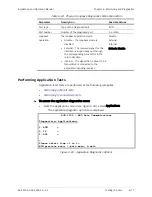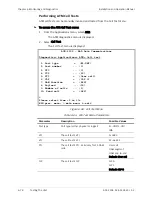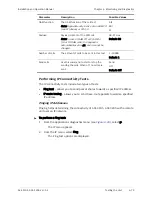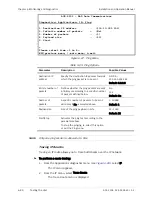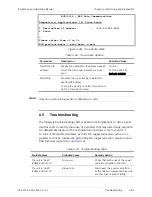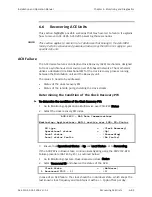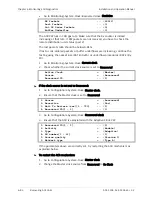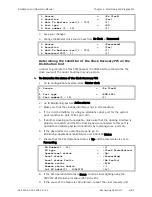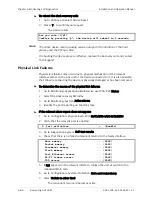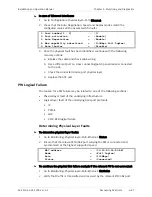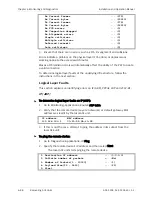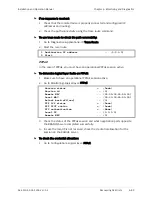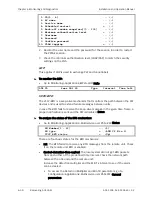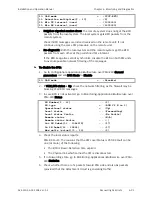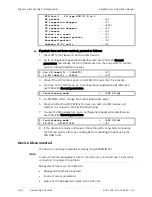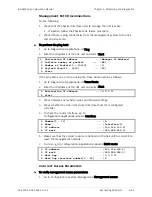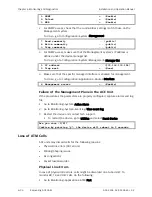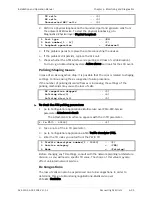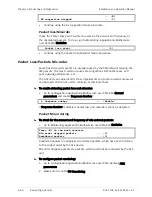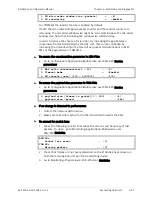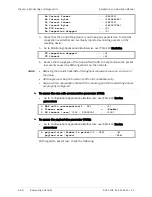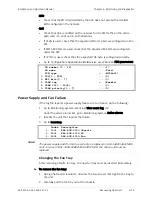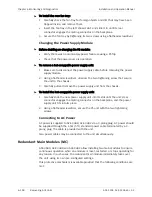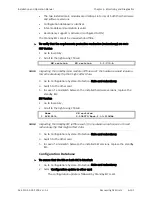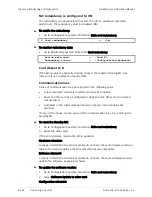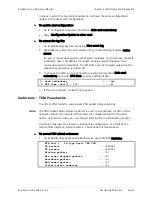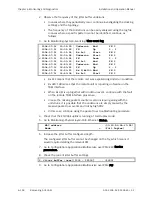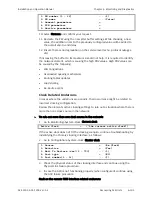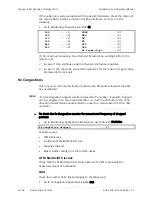
Installation and Operation Manual
Chapter
6 Monitoring and Diagnostics
ACE-3105, ACE-3205 Ver. 5.2
Recovering ACE Units
6-91
10. OAM mode > (VCCV-BFD)
11. Detection multiplier[2 - 60] ... (5)
12. Min TX interval (usec) ... (1000000)
13. Min RX interval (usec) ... (1000000)
•
Neighbor-signaled-session-down: The remote system does not get the BFD
packets from the local system. The local system gets BFD packets from the
remote system.
Check if BFD messages are indeed received on the remote unit. If not
continue using the same PW procedure on the remote unit.
•
No-diagnostic: Both the local system and the remote system get the BFD
packets from each other at the predefined time interval.
If the BFD keep-alive cannot synchronize, disable the BFD on both PW units
to overrule possible network filtering of the messages.
³
To disable the BFD:
1.
Go to Configuration>Applications>Multiservice over PSN>PW>General
parameters and set OAM Mode to Disable.
10. OAM mode > (Disable)
2.
If VCCV_BFD status is Up, check the network filtering, as the firewall may be
blocking VCCV-BFD messages.
3.
In case BFD is not activated, go to Monitoring>Applications>Multiservice over
PSN>PW>Status.
PW Number[1 - 66] ... (2)
PW type
> (ATM VP N to 1)
Operational status > (Up)
Local status
... (Forwarding)
Local status faults
... (No faults)
Remote status
... (N/A)
Remote status faults
... (-)
Out PW Label[16 - 1048575]
... (17)
In PW Label[16 - 65534]
... (17)
Max cells (actual)[1 - 29] ... (1)
4.
Check the local status reports:
PSN-RX Fault - The reasons that the PW Local Status is PSN RX Fault can be
one (or more) of the following:
The BFD is Down-Detection time expired.
The Physical link which carries the PW is disconnected.
5.
If in Forwarding state, go to Monitoring>Applications>Multiservice over PSN>
PW>Statistics.
6.
Check whether there are Tx packets toward PSN side and also Rx packets
(provided that the Attachment Circuit is generating traffic).

